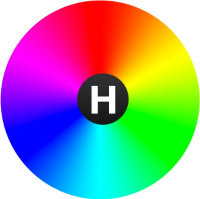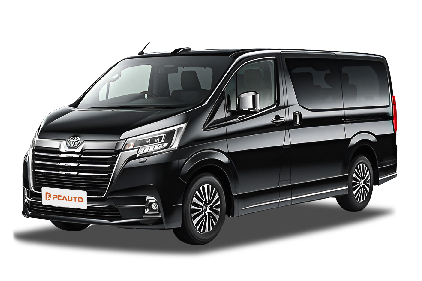Q
What is the difference between Toyota Hiace and Granvia?
Although the Toyota Hiace and Granvia are both commercial vehicle models under Toyota, they have obvious differences in positioning, design, and functionality. The Hiace focuses on practicality and economy, offering various body sizes and seating configurations (such as van or passenger versions). It is suitable for logistics transportation or large-family trips. In terms of power, it usually comes with a 2.8L diesel engine, emphasizing fuel efficiency and durability.
On the other hand, the Granvia is positioned more upscale. It is built on the Hiace platform but places greater emphasis on comfort. The interior materials are more refined, with high-end seats and an entertainment system as standard equipment. It is suitable for business receptions or luxury group outings. The power options may include a 3.0L diesel engine or hybrid alternatives.
Expanding on this, Malaysian users can consider their usage and budget when making a choice. The Hiace is ideal for commercial scenarios where cost-performance is a priority, while the Granvia is suitable for customers who pursue a comfortable experience. Both models are well-known for Toyota's reliability, and there is a comprehensive local after-sales network, which makes maintenance and servicing convenient.
Special Disclaimer: This content is published by users and does not represent the views or position of PCauto.
Related Q&A
Q
Is Granvia rear-wheel drive?
Yes, the Toyota Granvia in the Malaysian market uses a rear-wheel drive (RWD) layout. This type of drivetrain typically provides better load-carrying capacity and stability for the vehicle, especially suitable for situations with multiple passengers or heavy luggage. That's why many large MPVs and commercial vehicles tend to adopt rear-wheel drive design. The advantage of rear-wheel drive is that the power transmission is more direct, and it performs even better when climbing hills or when the vehicle is fully loaded. However, it should be noted that the handling of rear-wheel drive vehicles on slippery roads may be a bit more challenging than that of front-wheel drive vehicles, so more caution is needed when driving.
If you have more questions about the driving experience or maintenance of the Granvia, you can also refer to the owner's manual provided by Toyota Malaysia officially or consult the local authorized dealers. They can offer more detailed vehicle configurations and driving suggestions.
In addition, considering Malaysia's rainy climate, it is particularly important for rear-wheel drive vehicles to regularly check the tire condition and maintain proper tire pressure. This can ensure driving safety and optimize fuel efficiency.
Q
How many kilometers will a Hiace last?
As a commercial vehicle model known for its durability, the Toyota Hiace enjoys a good reputation in the Malaysian market. Its service life mainly depends on daily maintenance and driving habits. Under normal circumstances, a well-maintained Hiace can travel 300,000 to 500,000 kilometers or even more. Many commercial vehicle owners in Malaysia have reported that their Hiace vehicles still perform well after reaching 400,000 kilometers. The key is to regularly replace vulnerable parts such as engine oil, transmission oil, and timing belts, and pay attention to checking the chassis and engine conditions.
It's worth mentioning that the hot and humid climate in Malaysia has a significant impact on the rubber parts and electronic components of vehicles. It is recommended that owners shorten the maintenance cycle and pay special attention to the maintenance of the air-conditioning system and circuits. Meanwhile, the diesel engine of the Hiace is designed to focus on high torque at low speeds, which is very suitable for the mountainous roads and frequent stop-and-go traffic conditions in Malaysia. This design also helps to extend the engine life.
For consumers considering buying a used Hiace, it is recommended to focus on checking the engine condition, the smoothness of the transmission shift, and the rust situation of the vehicle body. These factors can reflect the real condition of the vehicle better than simply looking at the mileage.
Q
Are Toyota Granvia reliable?
In the Malaysian market, the Toyota Granvia is well-favored by many family and business users for its reliability and practicality. This MPV, built on the Toyota HIACE platform, inherits the Toyota brand's consistent durability. The 2.8-liter diesel engine (as in the Granvia Premium configuration) has been long-term tested in the market. It offers a smooth power output and good fuel economy, which is suitable for long-distance driving or passenger-carrying needs. Its maintenance cost is relatively reasonable, and with Toyota's extensive service network, parts supply is also quite convenient, reducing concerns about post-purchase maintenance.
However, like all diesel vehicles, regular maintenance of the turbocharging system and fuel injection device is crucial. It is recommended to follow the manufacturer's specified maintenance schedule to extend its service life. Compared with MPVs in the same class, such as the Honda Stepwagon or Nissan Serena, the Granvia has an edge in terms of more spacious seating and Toyota's brand reputation. But in terms of fuel consumption and handling flexibility, it may be slightly inferior to some gasoline-powered competitors.
If you value space and reliability and often have the need to carry multiple passengers, the Granvia is worth considering. But it is advisable to take a test drive and compare it with other models in the same class. Also, pay attention to the condition of used cars in the second-hand market, as maintenance records are especially important for diesel vehicles.
Popular Cars
Model Year
Car Compare
Car Photo
Latest Q&A
Q
Why is gasoline a fuel?
Gasoline can serve as a fuel because it possesses core properties suitable for providing power and the ability to convert energy. It is a hydrocarbon mixture obtained through fractional distillation and cracking of petroleum, mainly containing C5-C12 aliphatic hydrocarbons, naphthenes, and a small amount of aromatic hydrocarbons. It is characterized by volatility and flammability, with low viscosity facilitating smooth flow in injection systems, and rapid evaporation enabling quick formation of a uniform combustible mixture with air. Gasoline stores chemical energy; when ignited by a spark plug in the engine combustion chamber, it burns rapidly to release a large amount of thermal energy, which pushes the piston to move and converts into mechanical energy, providing power for vehicles such as cars and motorcycles. In addition, the anti-knock property of gasoline (measured by octane number) can adapt to engines with different compression ratios, ensuring stable operation and performance; it has a high energy density, storing more energy per unit volume, good combustion efficiency, and high availability of gas stations for convenient use. Therefore, it has become the main fuel for spark-ignition internal combustion engines and is widely used in transportation and related fields.
Q
What are 1st, 2nd, and 3rd family gases?
The first, second, and third family cars are vehicle categories classified based on the stages of family car-purchasing needs. The first family car is an entry-level economical model, such as the Perodua Axia and Proton Saga, priced at approximately 30,000 to 50,000 Malaysian ringgit. It emphasizes fuel efficiency and practicality, making it suitable for young families purchasing a car for the first time. The second family car falls into the mid-range category, offering more space and enhanced features, such as the Proton Persona and Toyota Vios, priced between 60,000 and 100,000 Malaysian ringgit, catering to the comfort requirements of growing families. The third family car is a premium model or an MPV/SUV, such as the Proton Exora and Honda CR-V, priced above 100,000 Malaysian ringgit. It boasts spacious interiors and upscale configurations, ideal for larger families or long-distance travel. Malaysian consumers typically prioritize fuel efficiency, maintenance costs, and space when selecting a vehicle. Families at different life stages adjust their car choices accordingly. For instance, small families may begin with the first category, upgrade to the second after having children, and larger families often opt for the third category.
Q
What are the four types of natural gas?
Natural gas can be classified into four main types based on its source: gas field gas (pure natural gas), associated petroleum gas, condensate field gas, and coalbed methane. Gas field gas is directly extracted from gas wells, typically containing over 90% methane with minimal impurities. Associated petroleum gas is a byproduct of oil extraction, containing not only methane but also significant amounts of other hydrocarbons such as ethane and propane. Condensate field gas yields light hydrocarbon fractions during extraction, characterized by a high methane content and small quantities of heavier hydrocarbons like pentane. Coalbed methane is extracted from underground coal seams, primarily consisting of methane and nitrogen, and must have a methane content exceeding 40% to be utilized as fuel. Due to compositional differences, these natural gas types vary in calorific value and applications. The first three are commonly used for urban gas supply, whereas coalbed methane requires purification before effective utilization. As a clean and efficient energy source, the development and utilization of these diverse natural gas types play a crucial role in optimizing energy structure.
Q
What are the three types of fuel gas?
Common fuel gases are mainly divided into three types: natural gas, liquefied petroleum gas (LPG), and manufactured gas. Natural gas is a flammable gas existing in nature, with methane as its main component. It is colorless and odorless, leaves no residue after combustion, and has high thermal efficiency, making it a clean energy source. Liquefied petroleum gas is a by-product of the petroleum refining process, whose main components include propane and butane. It is a gas at room temperature but can be converted into liquid through pressurization and cooling, facilitating storage and transportation. Manufactured gas is generated through thermochemical reactions of fossil fuels such as coal or petroleum under specific conditions, with main components including hydrogen, carbon monoxide, and methane. It has low production costs but produces certain pollution after combustion, so ventilation should be ensured during use. These three fuel gases have different application scenarios in the energy supply field, and their calorific values and usage characteristics also vary. For example, the calorific value of natural gas is approximately 33,000-36,000 kcal per cubic meter, that of LPG is about 90,000 kcal per kilogram, and that of manufactured gas is roughly 3,500-4,200 kcal per cubic meter. The different calorific values make them suitable for different energy demand scenarios such as households and industries.
Q
Is unleaded petrol a gas?
Unleaded gasoline is not a gas but a liquid fuel. It refers to gasoline with a lead content of less than 0.013 grams per liter and without the addition of tetraethyl lead as an anti-knock additive during the refining process. Its octane rating is typically 95, slightly lower than the 97 of leaded gasoline. The use of unleaded gasoline can effectively reduce emissions of harmful substances such as hydrocarbons, carbon monoxide, and nitrogen oxides in vehicle exhaust, thereby lowering pollution risks including smog, toxic gases, and acid rain. However, it should be noted that while unleaded gasoline contains no artificially added lead, it still retains trace amounts of lead from crude oil. Additionally, its combustion releases gases, particulate matter, and condensates, with particles smaller than 2 microns in diameter being particularly prone to prolonged suspension in the air and subsequent human inhalation. Thus, potential health impacts remain a concern. Currently, most vehicles can use unleaded gasoline directly, though certain models require selecting the appropriate octane grade as recommended by the manufacturer to ensure optimal engine performance and longevity.
View MoreRelated News

The new Toyota Corolla is launched in China, with a wheelbase extended to 2750mm
AshleyDec 23, 2025

Will the Toyota Yaris Cross come to Malaysia? If it comes, how much will it sell for?
JamesDec 19, 2025

2026 Toyota HiLux receives five-star ANCAP safety rating in ANCAP
MichaelDec 12, 2025

2026 Toyota bZ4X features a larger battery and longer range but needs to be sold at a lower price
WilliamDec 12, 2025

Toyota introduces Wolfspeed SiC power semiconductors, considering their durability to be better
JohnDec 11, 2025
View More











Pros
Cons